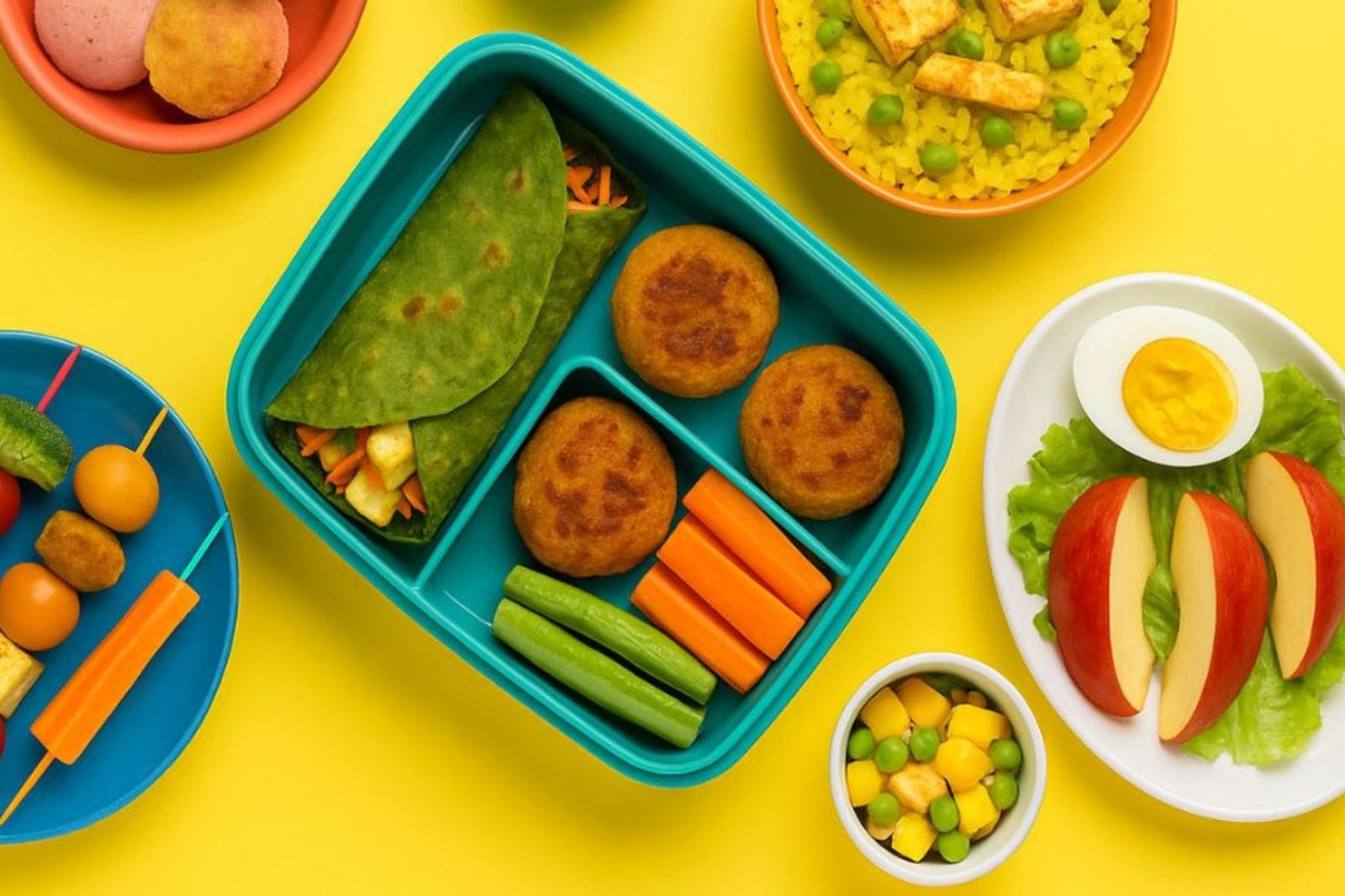
The Power of One Lunchbox: Healthy vs. Unhealthy Eating in Kids

The Power of One Lunchbox: Healthy vs. Unhealthy Eating in Kids
Introduction
Every parent who wakes up early to prepare a healthy tiffin for their child knows the effort it takes. Fresh vegetables are chopped, whole wheat rotis are rolled, sprouts are soaked, and fruits are sliced, all to ensure that the child receives the right nutrition for growth, focus, and energy.
But the reality inside classrooms often tells a different story. Amidst ten boxes filled with balanced, home-cooked food, one box filled with chips, pizza, or sugary snacks can quickly grab everyone’s attention. Children, naturally curious and easily influenced, start comparing and complaining. Soon, the careful effort of many parents is overshadowed by a single unhealthy tiffin.
At Midas Wellness Hub, we see this pattern often. It is not about blaming parents, most simply lack awareness of how deeply food choices affect not only their own child but also the wider classroom environment. This blog explores how negativity spreads faster than positivity in food culture among children, and how functional medicine can help shift the balance back to health.
The Influence of One Tiffin

Children rarely look at food through the lens of nutrition. They see food as fun, colorful, and tasty. A shiny packet of chips or a cheesy slice of pizza excites them far more than a bowl of dal and vegetables.
Here’s how the influence begins:
- One child opens an unhealthy tiffin.
- Others immediately find it more appealing than their own.
Complaints begin: “Why can’t I have this?”

Parents face pressure to replace healthy meals with junk.
This is how one unhealthy choice spreads negativity faster than ten positive ones. The majority effort of parents who prepare nourishing meals is quickly overshadowed.
The Ripple Effect on Children
1. Peer Pressure and Comparison
Children don’t want to feel left out. If junk food becomes the “cool” option, others start rejecting healthier meals.
2. Decline in Nutrition Quality
Parents, tired of complaints, sometimes give in and start adding unhealthy snacks to their child’s box.
3. Negative Perception of Healthy Food
Home-cooked sabzi, fruits, and sprouts begin to feel boring in comparison to processed food.
4. Long-Term Habits
Repeated exposure to processed foods at school builds unhealthy eating patterns that last into adulthood.
Why Negativity Spreads Faster
From a psychological and social point of view, negativity often spreads faster than positivity.
- Attraction of novelty: Junk foods are marketed with colors, flavors, and packaging that attract children immediately.
- Instant gratification: Salty, sugary, and fried foods provide quick pleasure to the taste buds, while healthy food requires acquired taste.
- Group effect: When one child enjoys a burger, others feel deprived and push back against their own meals.
This explains why one unhealthy tiffin can overpower many healthy ones.
The Functional Medicine View
Functional medicine looks at the root causes behind these choices and their impact. Instead of only saying, “Don’t pack junk,” it asks:
- Why do parents choose these foods?
- What nutrients are missing in the child’s diet?
- How is food affecting the child’s mood, energy, and focus?
Impact of Unhealthy Tiffins on Health
1. Energy Crashes – Processed foods lead to sudden energy spikes followed by fatigue.
2. Weakened Immunity – Lack of vitamins and minerals makes children fall sick often.
3. Poor Focus in Studies – Blood sugar fluctuations affect concentration.
4. Emotional Swings – Irritability and mood changes are linked to diet.
5. Digestive Issues – Low fiber and high additives harm gut health.
A Case Example
At Midas Wellness Hub, we worked with a 9-year-old whose parents packed chips and pizza slices almost daily. The boy became the center of attraction in class, but also developed frequent colds, low energy, and poor academic focus. His tiffin also led other children to complain about their own home-cooked food.
Through functional medicine counseling, the parents learned how nutrition drives both physical and mental health. Slowly, they shifted his tiffin to healthier yet attractive options: paneer wraps, fruit sticks, millet cutlets, and nut mixes.
Within a few weeks, not only did his health improve, but his classmates also became curious about his new meals. The negativity began to turn into positivity.
How Positivity Can Spread Too
Just as one unhealthy tiffin spreads negativity, one healthy, colorful, and appealing tiffin can inspire others.
Strategies for Parents
1. Make It Attractive – Use colorful vegetables, creative shapes, and fun presentations.
2. Add Variety – Rotate grains, proteins, and fruits so children don’t feel bored.
3. Pack Smart Snacks – Replace chips with roasted makhana, fruit chaat, or homemade granola.
4. Involve Children – Let kids help in choosing and preparing their meals.
5. Explain Benefits Simply – Tell stories about how certain foods make them stronger, faster, or sharper.
Role of Schools
Introduce “Healthy Tiffin Days.”
- Educate both children and parents about nutrition.
- Reward healthy eating habits.
- Limit or ban processed junk during school hours.
Practical Functional Medicine Tiffin Ideas
Parents often ask: What should I pack so my child eats happily and stays healthy? Here are some functional medicine-inspired ideas:
- Mini Paneer or Chicken Rolls (whole wheat base, colorful veggies)
- Fruit Sticks with Nut Butter Dip
- Sprouted Moong Salad with Lemon
- Vegetable Idlis with Chutney
- Boiled Egg and Veggie Wraps
- Millet Cutlets with Mint Dip
- Homemade Popcorn or Roasted Makhana
These are not only nutritious but also visually appealing and child-friendly.
Long-Term Benefits of Positive Tiffins
When positivity is reinforced through healthy tiffins, the results show in multiple ways:
- Better Immunity – Fewer sick days and stronger resistance to infections.
- Improved Focus – Consistent energy helps with classroom learning.
- Emotional Stability – Reduced irritability and mood swings.
- Academic Growth – Sharper memory and higher concentration.
- Healthy Habits for Life – Early food culture influences adulthood choices.
Final Thoughts
One child’s unhealthy tiffin can overshadow many healthy ones. Negativity spreads quickly in classrooms, often faster than positivity. But with awareness, guidance, and a functional medicine approach, the story can change.
Healthy tiffins, when made appealing and varied, can inspire a ripple effect of positivity. Parents, teachers, and wellness experts must work together to ensure that the food children carry each day supports their growth, learning, and future health.
At Midas Wellness Hub, we believe every tiffin is more than a meal, it is a tool to spread health, happiness, and inspiration. By making small but meaningful changes, one child’s tiffin can become the reason for a healthier classroom.
